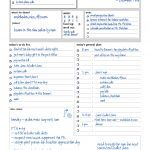
Many of you have shared with me your positive experiences in regularly using the Daily Docket, and I’m so thankful for your encouraging feedback. For those of you who are newer readers — feel free to first download the Docket and see what you think.
There’s a lot of info on the internet about scheduling your day as a stay-at-home mom, and I’ve tried to apply a lot of these different tactics. They never worked for me. They were too rigid — a system would encourage me to write out a specific timetable for my day, and rotate weekly jobs set in stone on different days of the week. By writing this schedule out and hanging it visibly, I’d know what to do next.
It’s a great idea, but my life’s a lot more… unpredictable. When I tried to make Thursdays my Laundry Day, or One-On-One Time With My Daughter at 11 o’clock Monday through Friday, I was trapped.
I was trapped because life happened — one week I’d have an abnormally large amount of laundry, so by trying to do it all in one day, I set myself up for failure because I just couldn’t do it all. Time with my daughter would get pushed back because we really needed to run errands at 11 a.m., or she needed an earlier nap and 11 just wouldn’t do.
I wanted to throw any semblance of routine out the window. But I really didn’t want to do that, because a routine helps me. I love checking things off a list. I’m visual, so it helps to see my day’s plan.
What has evolved as my Daily Docket is a marriage of scheduled routine and flexibility.It provides the skeleton for me to hang my agenda, but it allows for wiggle room because I fill out a new sheet each day.
Instead of a set routine for Mondays, I fill out a fresh sheet for that very day, using a Weekly Checklist as my resource (also found on the downloads page). My week’s goal is to get everything done I need to do by that week, but I’m flexible as to when specifically I should do it..
Let me show you how this works.
The night before, I take one of these and fill it out for the next day. It helps if I fill it out in pencil because things are so unpredictable in our home that I have to be flexible.
The smaller categories on the page are as follows:
- My MITs – The three most important things on my agenda today.
- Current Scripture I’m working on memorizing/meditating over.
- What’s for Dinner? – When I write it down, I remember way in advance what the dinner plans are, and what I need to do in advance for preparation, so I’m not scrambling at 5:45.
- Health stuff – I’m trying to log my water and my food choices, so I like checking off that I’ve done that. And by writing down my work out plans, I’m more apt to do it.
- Blog and/or Graphic Design stuff – To-do items for my blogs and my graphic design business.
The bigger items are my day’s to-do list and my day’s general plan.

My to-do list: it’s short.
I limit myself to 10 things, because I know I realistically can’t get more than that checked off. I’ve actually almost never gotten all 10 accomplished in one day. By keeping it short, I’m making success – finishing my list – more of a reality. If I remember additional things throughout the day, I jot them down in my notes section, possibly for tomorrow’s list. I like Jamie’s idea of sticking with six items.
My day’s general plan: it’s general.
General is the key word here. The Docket looks a lot more structured than it is, but I don’t write out every last thing I have to do that day. I only assign a time and slot to those things I want to get done at a time of day. I want to get computer work during my kid’s nap time, so I remind myself that it’s a 2 o’clock job. I want to get breakfast on the table by 8, so I make a note of that. And most importantly for me, I want to get to bed by 10:30. Seeing it on paper reminds me that it’s important.
Here’s an example of what a Daily Docket looks like filled out (click to enlarge it):

Application Time
Feel free to download this Daily Docket (or the smaller one) for free. But you don’t have to use this — use what works for you. The point is to have a plan for your day, and to approach it proactively.
Whatever you use, keep it simple, easy-to-read, very easily accessible throughout your day, and thorough enough to manage your whole day on one sheet.
What do you use to get you focused on the day? If you use the Docket, do you have any suggestions or feedback? I know several of you have asked for an even smaller one than the Pocket Docket… I might get to that. Someday.


